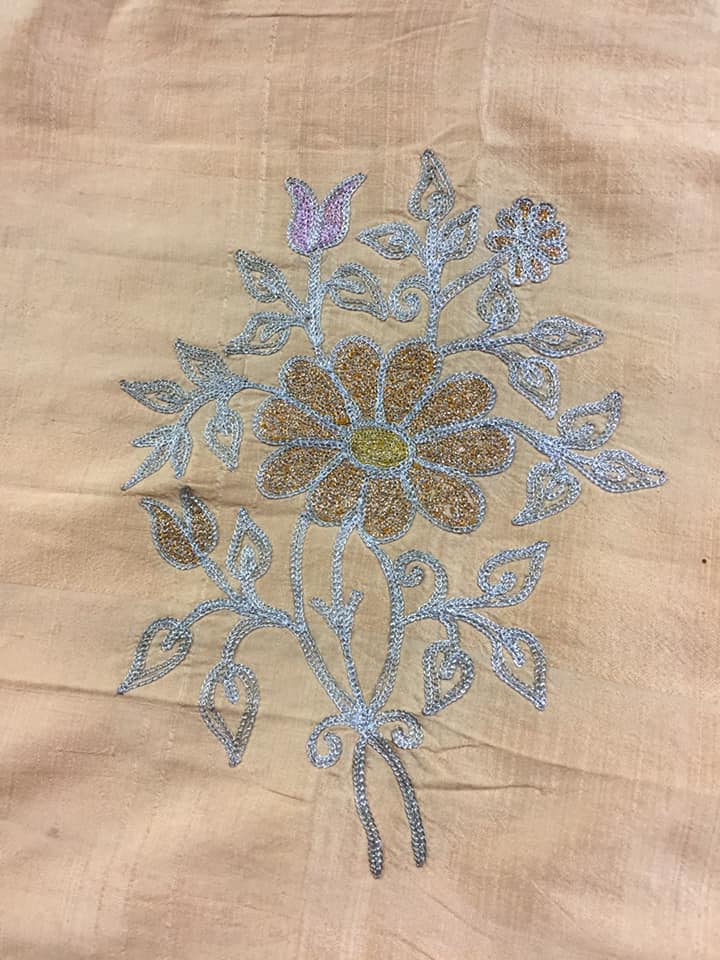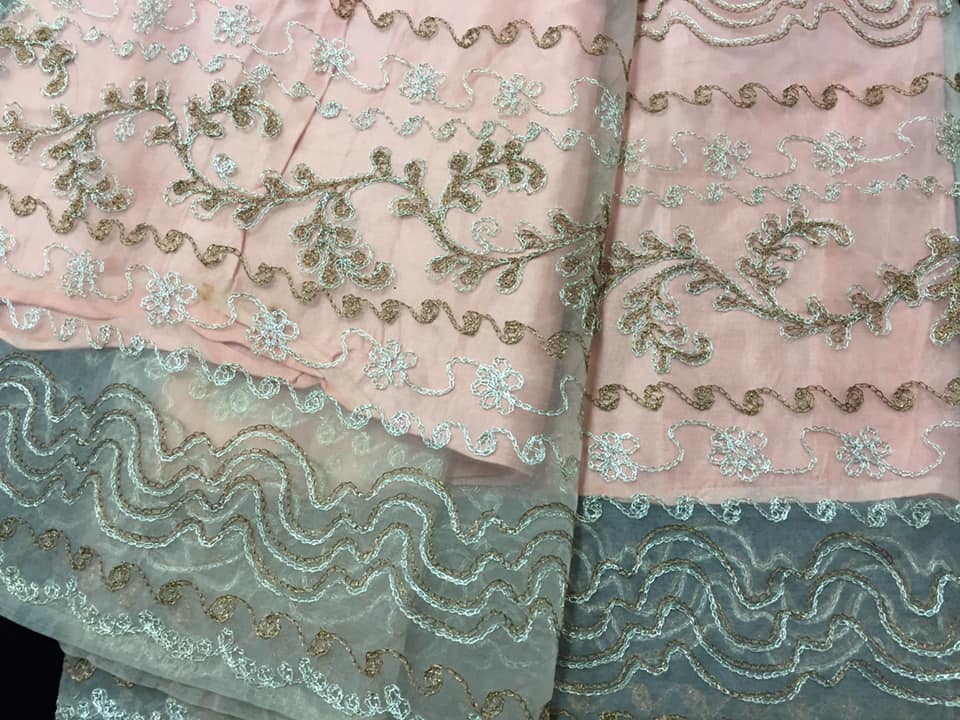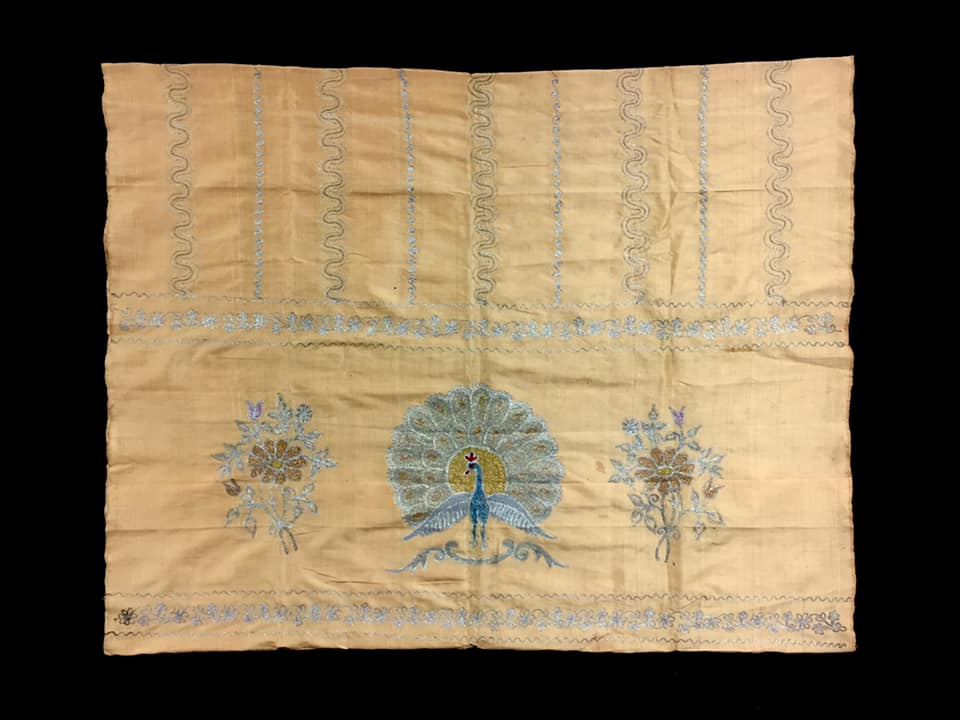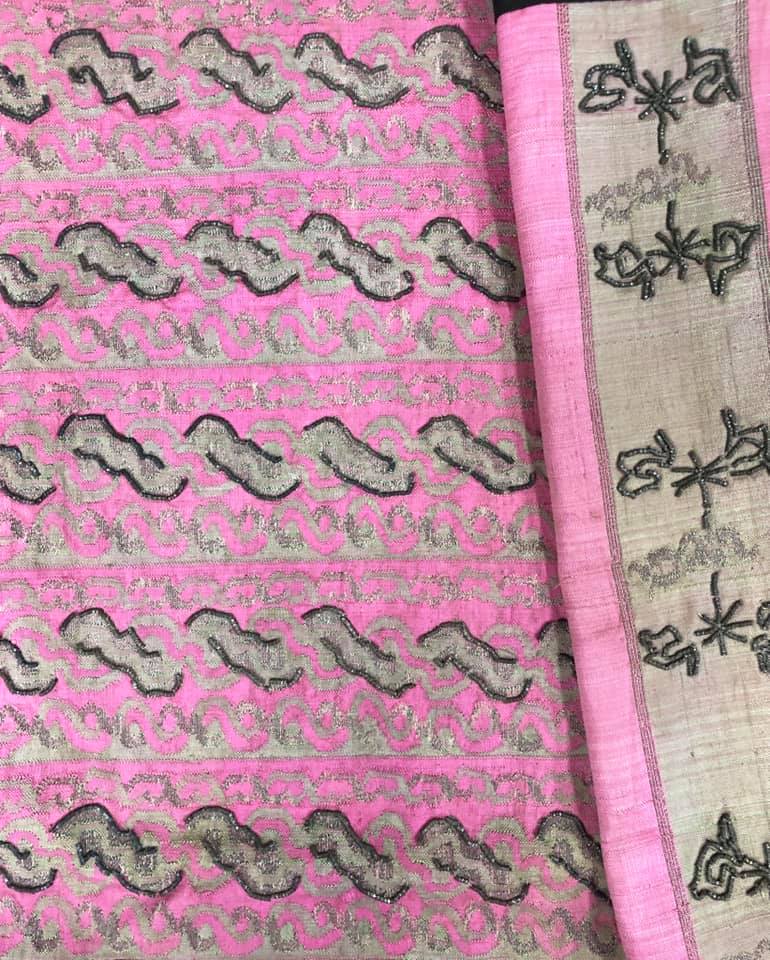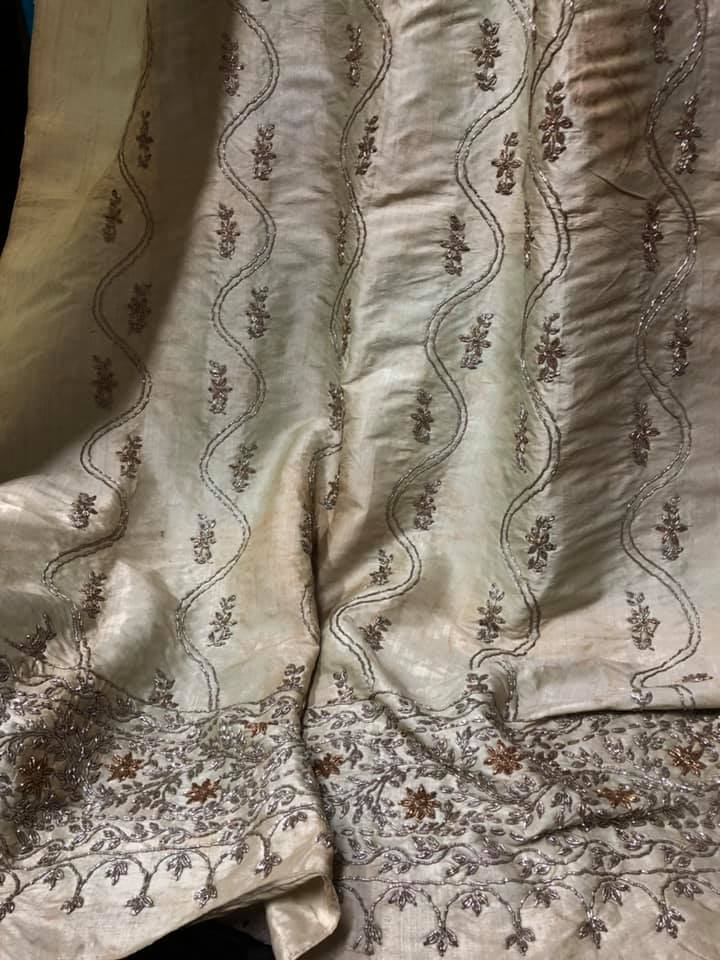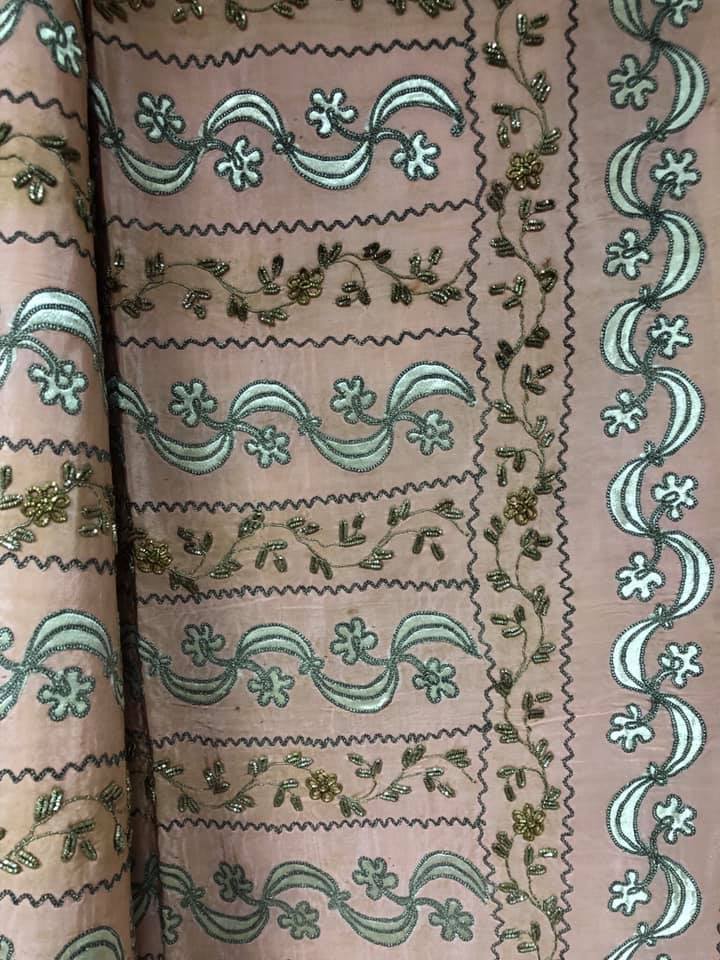Burmese Embroidery
By Thweep Ake Rittinaphakorn
Burmese culture is fascinating; rich, exotic, and quite distinctive. It’s apparent through its visual culture of various forms. Textiles and woven material are one of them. This is seen through its thriving traditional dress wearing culture that the locals still practice. My passion in learning about Burmese textiles and traditional dresses leads to this rewarding collecting journey. Over the years, I have collected ranges of examples of Burmese garments, woven and embellished with various techniques. Many can be studied and compared with the photographic evident. The result can be quite revealing opening up to the understanding of the fashion, aesthetic sense, trade & social dynamism of the olden days, especially during colonial and independent time.
The Burmese has great sense of how to embellish their textiles, visibly through their htemain and longyi. The notable examples are those for ceremonial use i.e. for weddings and novitiation & ear-boring ceremonies. One of the embellishment methods employed is embroidery work. When referring to Burmese embroidery, one usually has the vision of elaborate and sumptuous emboss embroidery work that employs vast amount of metallic threads and sequins and cut-glass pieces, known as ‘shwe chi htoe’.
However, there are 2 other styles of embroidery work found on Burmese textiles. These 2 types appear simpler and usually employed to embellish various kind of traditional clothing items including blouses, tube skirts, front opening wraparound skirts for females (htamein), long ceremonial male waistcloths (taungshey pahso). Clothing items with such embroidery work were widely used both by typical people as well as theatrical performers.
The first type of embroidery work is simple. It employs mainly the metallic
“bullion” (bu n-we), both kinds i.e. with smooth and rough texture ; gold or silver gilded. The bullion is stitched on the surface of the fabric as lines that delineate and forms the desired patterns. The finished work would then appear like a bullion drawing of design. In some case where extra fanciness is needed, sequin work is added. However, this style of embroidery is not very strong in structure. So, most of such works found on vintage/antique clothing items are likely to have damage with pieces of bullion missing.
The second type of embroidery work employs ‘chain stitching’ technique. The technique is believed to derive from India where it is still prevalent till now. In India, its technical name is known as ‘aari’ embroidery. Embroiderers only need a simple device, similar to a crochet needle, but a very slim one. The embroiderer holds this slim hooked needle in one hand, piercing it up and down the surface of the fabric, strung tightly on the frame, while using another hand to wind the metallic thread around the hooked end when passing through underneath the fabric. The needle then hooks the thread pulling it up to the surface forming a chain loop connecting to the next one. Once mastered the skill, the piercing speed can be very quick and the stitching becomes a long chain creating and forming a desired design. After the embroidery is completed, a wooden hammer would be used to hammer the surface of the fabric to flatten the chain stitch embroidery work giving it a smooth finished texture. Apart from using metallic thread to embroider, big size white thread was also use in such embroidery. However, the later yield bolder yet rougher results.
In many examples, both styles of embroidery are used together to create a more interesting finish. Additionally, other techniques of embellishment sometimes employed e.g. applique work, stencil work, etc. in combination with such embroidery work. These 2 styles of embroidery were likely to became popular from the 2nd quarter of the 20th century onwards. Hence, there are still many of their surviving specimens found now.
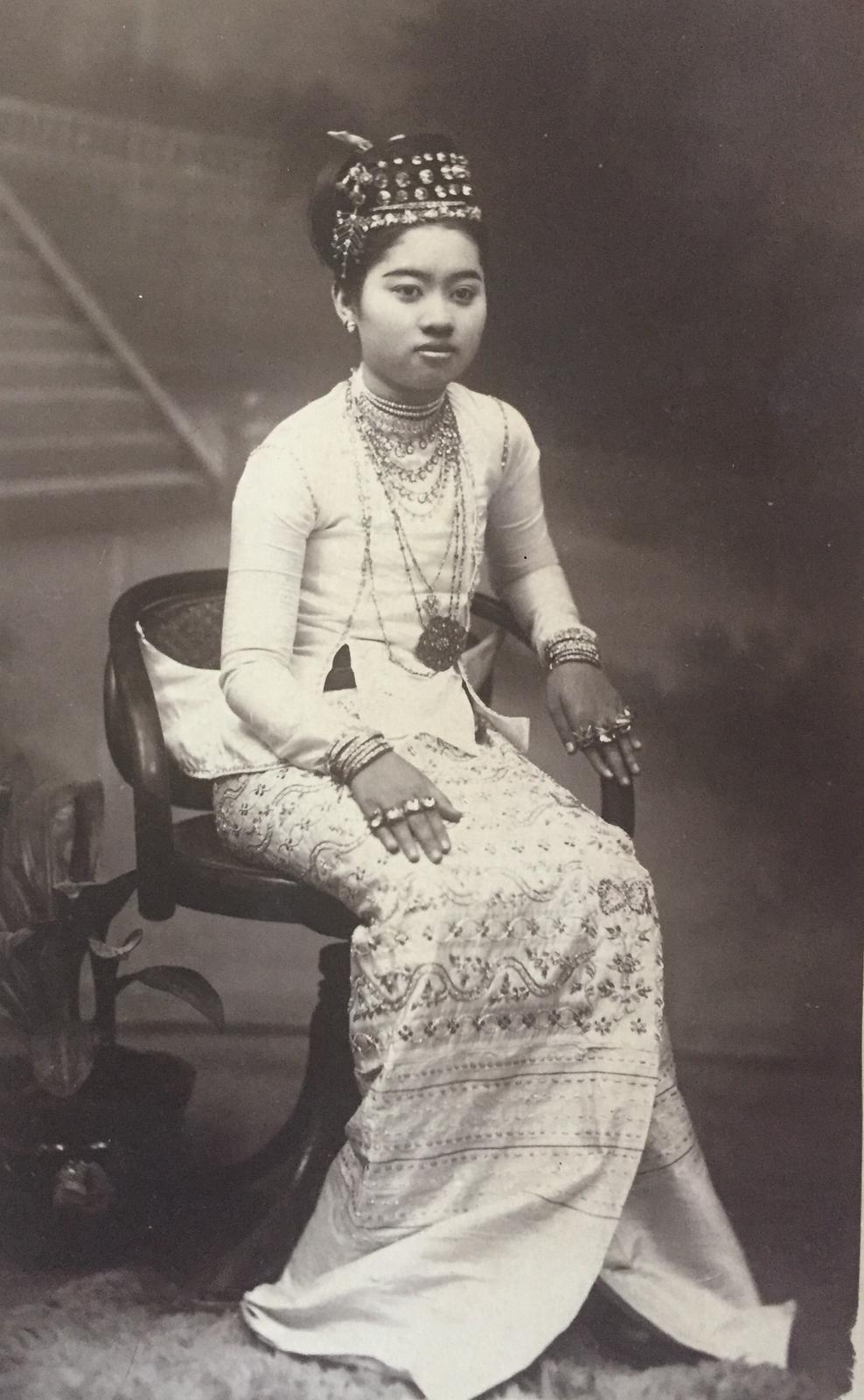
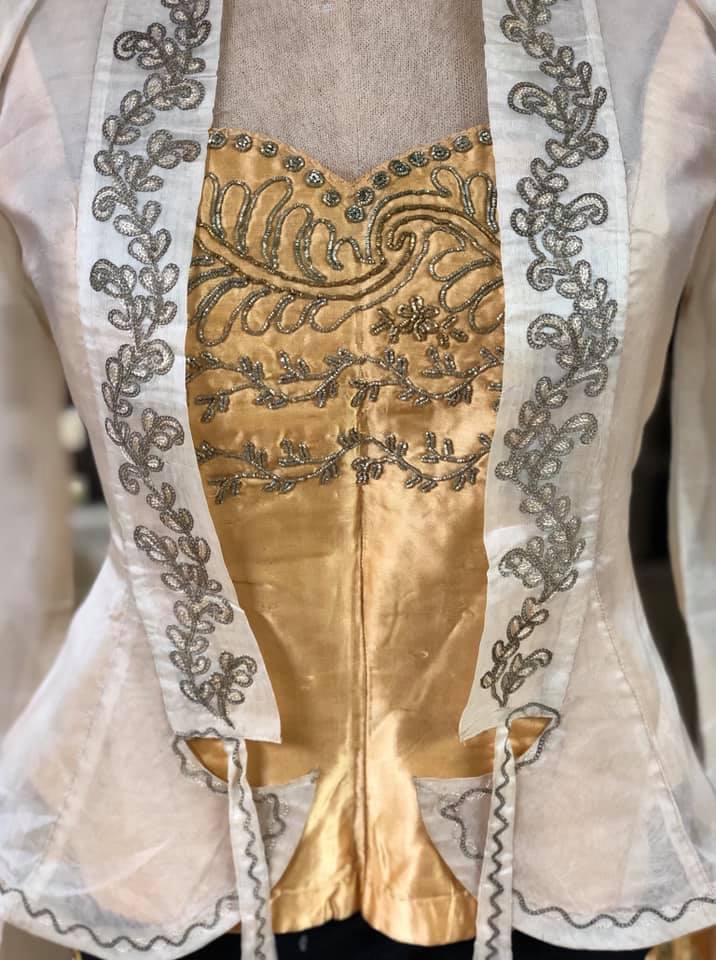
Thweep Rittinaphakorn (AKE) is an independent scholar whose work focuses mainly on textiles and arts history. He is currently working as a volunteer for the Siam Society and has recently been appointed as a textiles curator of the Siam Society textiles collection. AKE is an avid antique textiles enthusiast and collector with over a decade experience. He was recently invited to give a talk on the Burmese tapestry woven textiles “Luntaya Acheiq” as part of the exhibition in Chiang Mai.
